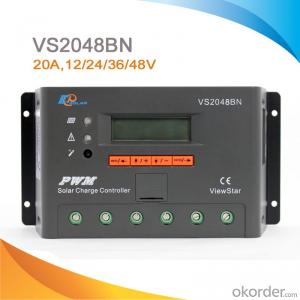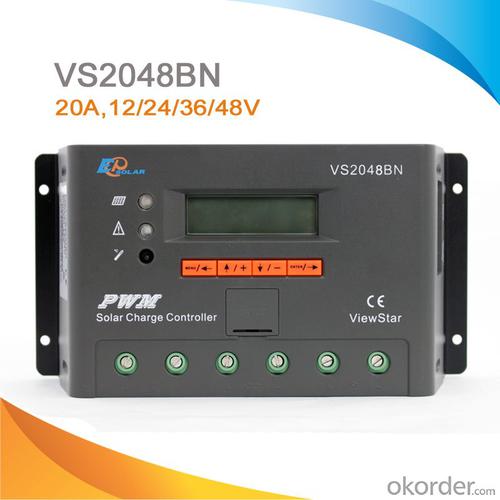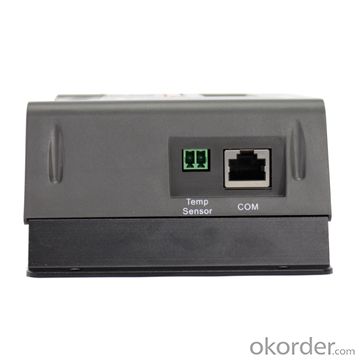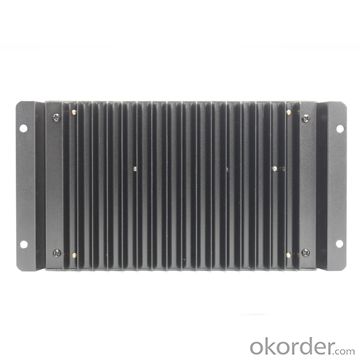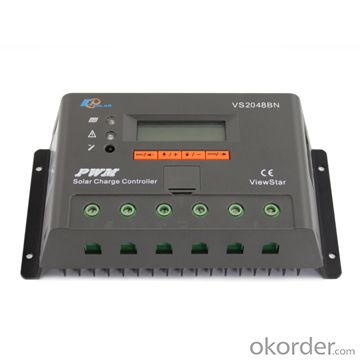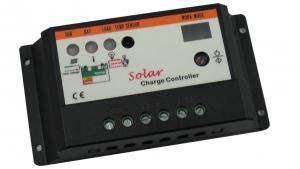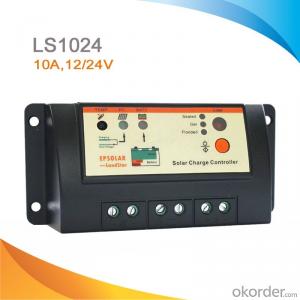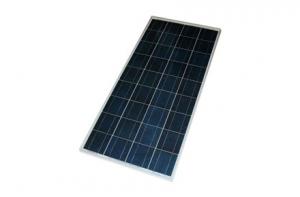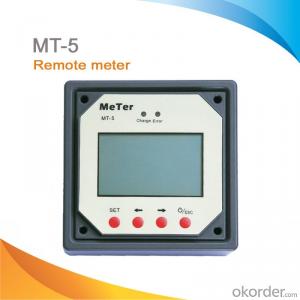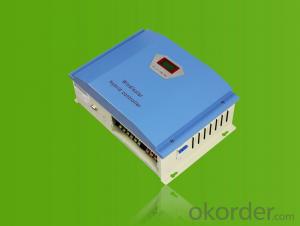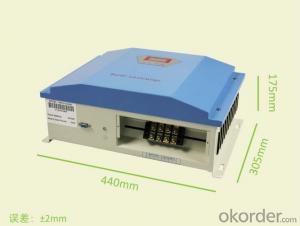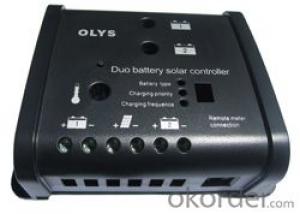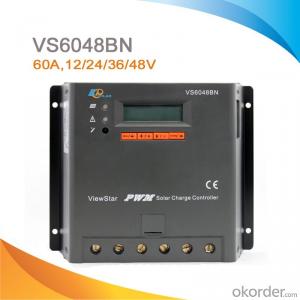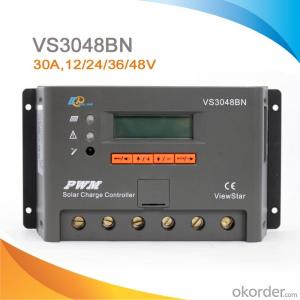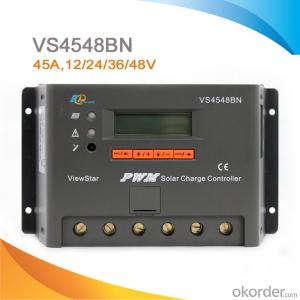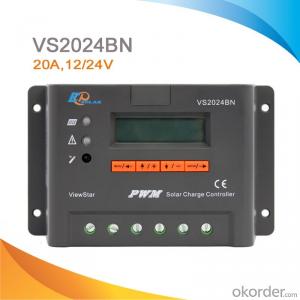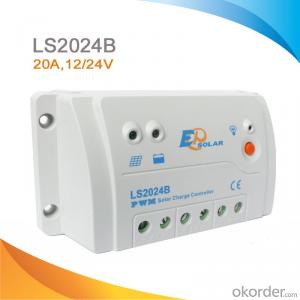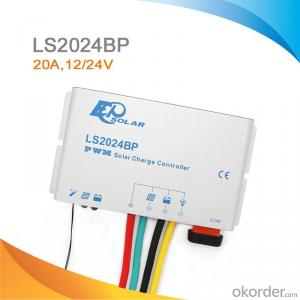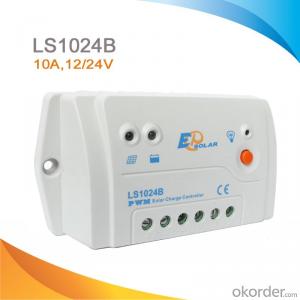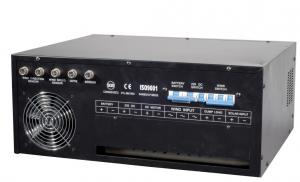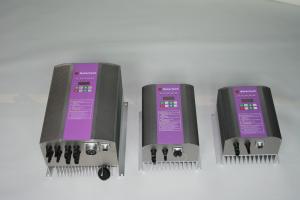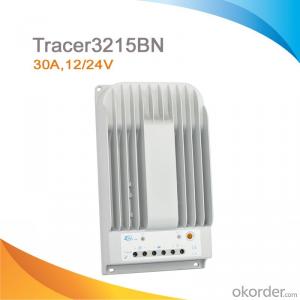Solar Controllers Ocala PWM Solar Charge Controller with LCD Display 20A, 12/24/36/48V, VS2048BN
OKorder Service Pledge
OKorder Financial Service
You Might Also Like
Solar Controller Descriptions
ViewStar series solar controller is our new generation controller for off-grid solar system. It can be widely used with various applications, such as street light, solar home system or small power station etc.
Features
·Excellent EMC design
·32 bit MCU with high speed
·High efficient Series PWM charging
·Four battery type options: Sealed, Gel, Flooded, and USER
·Intelligent lighting and timer control for solar lighting system
·12 bit A/D high-precision sampling to ensure accuracy
·Use MOSFET as electronic switch
·Full control parameters setting and modification, diversified load control mode
·Humanized design of browser interface, undertake every operating conveniently
·Temperature compensation
·Adopt graphics dot-matrix LCD screen and HMI (human-machine interface) with 4 buttons,integrated menu displaying and operation
·Energy statistics function
·RS485 ports with MODBUS communication protocol
·Optional PC monitoring software and remote meter for real-time monitoring and battery management parameter setting
·Field upgradable firmware
Electronic Protections:
·PV short circuit protection
·PV reverse polarity protection
·Battery overcharge protection
·Battery over discharge protection
·Battery reverse polarity protection
·Load overload protection
·Load short circuit protection
·Overheating protection
Specification:
Model | VS2048BN | VS3048BN | VS4548BN | VS6048BN |
Nominal system voltage | 12/24/36/48V auto work | |||
Rated battery current | 20A | 30A | 45A | 60A |
Rated load current | 20A | 30A | 45A | 60A |
Max. battery voltage | 64V | |||
Equalize charging voltage | Sealed: 14.6V, Flooded: 14.8V, User-defined: 9~17V | |||
Boost charging voltage | Gel: 14.2V, Sealed: 14.6V, Flooded: 14.8V, User-defined: 9~17V | |||
Float charging voltage | Gel /Sealed /Flooded: 13.8V, User-defined: 9~17V | |||
Low voltage reconnect voltage | Gel /Sealed /Flooded: 12.6V, User-defined: 9~17V | |||
Low voltage disconnect voltage | Gel /Sealed /Flooded: 11.1V, User-defined: 9~17V | |||
Self-consumption | ≤15mA(12V); ≤10mA(24V); ≤9mA(36V); ≤8mA(48V) | |||
Grounding | Common negative | |||
Temp. compensation | -3mV/°C/2V | |||
Relative humidity | 10%~90% Non-condensation | |||
Communication | RS485 / RJ45 interface | |||
LCD temperature | -20°C ~ +70°C | |||
Working temperature | -25°C ~ +55°C | |||
Humidity | ≤95% N.C. | |||
Enclosure | IP30 | |||
Overall dimension | 200x103x58mm | 201x109x59mm | 205x119x67mm | 205x174x64mm |
Terminals | 16mm2 | 35mm2 | 35mm2 | 35mm2 |
Net weight | 0.7kg | 0.9kg | 1.2kg | 1.5kg |
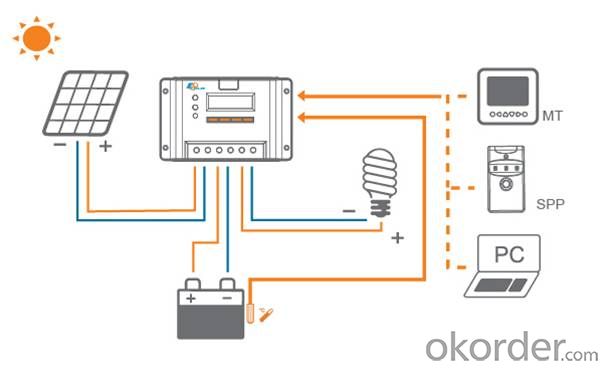
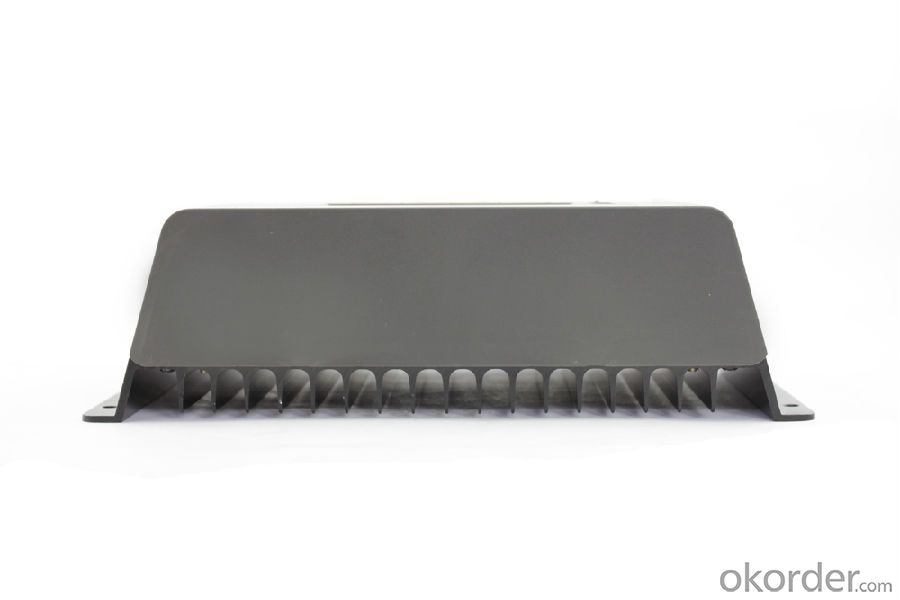
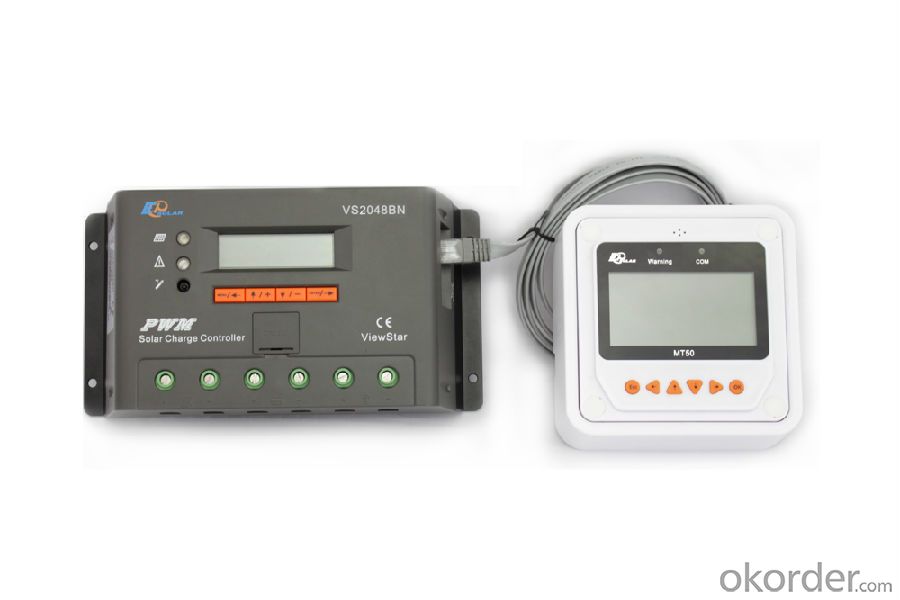
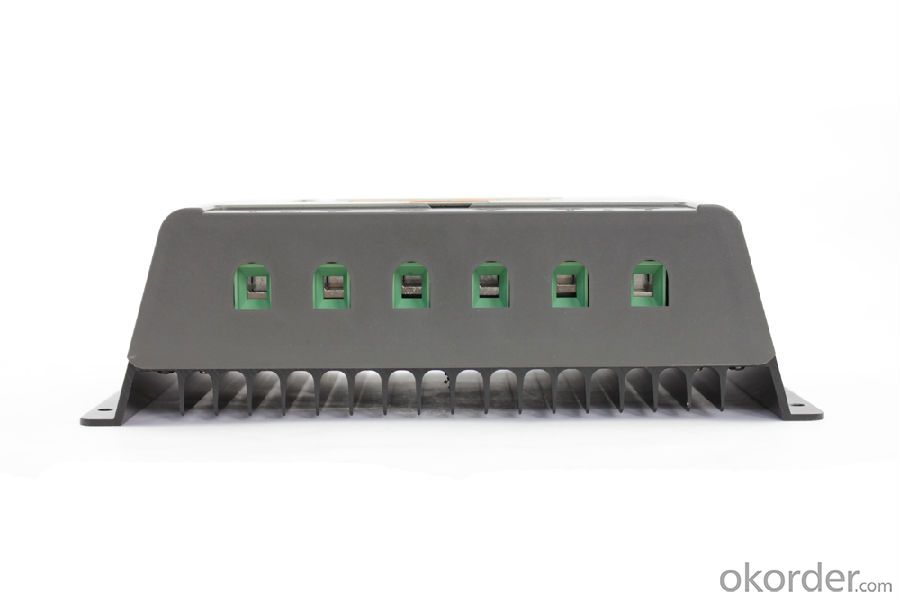
- Q: Can a solar controller be used with solar panel grounding systems?
- A solar controller can indeed be utilized alongside solar panel grounding systems. In fact, it is highly advisable to incorporate a solar controller as a vital component of the entire system. The primary role of a solar controller is to regulate the flow of charge from the solar panels to the batteries, thus preventing overcharging and increasing the lifespan of the batteries. Regarding solar panel grounding systems, their purpose is to establish a secure pathway for electrical current in the event of a fault or lightning strike. These systems generally consist of grounding rods, conductors, and bonding connections to effectively dissipate any excess electrical energy into the earth. Although the solar controller itself does not directly participate in the grounding system, as its primary function is to regulate the electricity flow, it is crucial to ensure that the solar panel arrays are appropriately grounded and bonded according to local electrical codes and standards. To summarize, a solar controller can be used in conjunction with solar panel grounding systems, as they serve different functions within the overall solar power system. It is essential to adhere to the appropriate guidelines and regulations to guarantee the safe and efficient operation of the entire system.
- Q: How do solar controllers protect batteries?
- Solar controllers protect batteries by regulating the amount of charge that flows into them from the solar panels. They prevent overcharging, which can damage the battery, and they also prevent excessive discharge, which can reduce the battery's lifespan. Additionally, solar controllers provide features like temperature compensation and low voltage disconnect, further safeguarding the batteries from potential damage.
- Q: How does a solar controller handle battery temperature compensation for charging?
- A solar controller handles battery temperature compensation for charging by monitoring the temperature of the battery and adjusting the charging voltage accordingly. It ensures that the battery is charged at the optimal voltage based on its temperature, thereby enhancing the charging efficiency and extending the battery's lifespan.
- Q: Can a solar controller be used with solar panels of different technologies?
- Yes, a solar controller can be used with solar panels of different technologies. A solar controller acts as a middleman between the solar panels and the batteries or electrical loads, regulating the flow of energy. It is designed to work with various solar panel technologies, such as monocrystalline, polycrystalline, and thin-film, ensuring compatibility and efficient energy conversion regardless of the panel type.
- Q: What is the maximum voltage that a solar controller can handle?
- The maximum voltage that a solar controller can handle varies depending on the specific model and brand. However, in general, most solar controllers can handle voltages up to 150 volts DC.
- Q: Can a solar controller be used with solar panels that are mounted on a pole?
- Yes, a solar controller can be used with solar panels that are mounted on a pole. The solar controller plays a crucial role in regulating the voltage and current flowing between the solar panels and the battery bank. It ensures that the batteries are properly charged and protected from overcharging. Regardless of the mounting location of the solar panels, whether on a pole or any other structure, the solar controller can still be connected to the panels to monitor and control the charging process. The solar controller will analyze the incoming power from the panels and adjust the charging parameters accordingly, maximizing the efficiency and lifespan of the battery system.
- Q: Can a solar controller be used with solar-powered indoor waste recycling systems?
- Yes, a solar controller can be used with solar-powered indoor waste recycling systems. A solar controller is a device that regulates and manages the flow of electricity from solar panels to batteries, ensuring optimal charging and preventing overcharging or damage to the batteries. In the case of indoor waste recycling systems powered by solar energy, a solar controller is necessary to ensure that the solar panels are efficiently charging the batteries that power the system. This allows for continuous operation of the waste recycling system even in low-light or cloudy conditions. Thus, a solar controller is an essential component in maintaining the functionality and efficiency of solar-powered indoor waste recycling systems.
- Q: Can a solar controller be used in a solar-powered oil rig?
- Yes, a solar controller can be used in a solar-powered oil rig. A solar controller regulates the flow of electricity between the solar panels and the batteries, ensuring optimal charging and preventing overcharging. This is crucial in a solar-powered oil rig as it helps to efficiently harness and store the solar energy generated by the panels, providing a reliable and sustainable power source for the rig's operations.
- Q: What is the role of a solar controller in preventing electrical surges in the solar panel system?
- The role of a solar controller in preventing electrical surges in a solar panel system is crucial to ensure the safe and efficient operation of the system. A solar controller, also known as a charge controller, is responsible for regulating the charge flow between the solar panels and the batteries or grid-connected system. One of its key functions is to prevent electrical surges that can potentially damage the solar panels, batteries, or other components of the system. Electrical surges can occur due to various factors such as sudden changes in weather conditions, lightning strikes, or power grid fluctuations. These surges can result in a sudden increase in voltage that exceeds the system's capacity, leading to potential damage or even complete failure. To prevent electrical surges, a solar controller utilizes various protective mechanisms. One common feature is voltage regulation, where the controller monitors the voltage levels of the solar panels and batteries. If the voltage exceeds a certain threshold, the controller will limit the charge flow to prevent overcharging and potential surges. Furthermore, some advanced solar controllers incorporate surge suppression devices or transient voltage suppressors. These devices are designed to divert excess voltage or high-energy transient spikes away from sensitive components, thus protecting them from damage. Additionally, solar controllers often include grounding mechanisms to ensure proper grounding of the system. Grounding helps to dissipate any excess energy and divert it safely into the ground, minimizing the risk of electrical surges. In summary, the role of a solar controller in preventing electrical surges is to regulate the charge flow, monitor voltage levels, incorporate surge suppression devices, and provide proper grounding. By implementing these measures, the solar controller plays a vital role in protecting the solar panel system from electrical surges and ensuring its long-term reliability and safety.
- Q: What is the maximum voltage and current rating for a solar controller?
- The maximum voltage and current rating for a solar controller depend on the specific model and manufacturer. However, common ratings for solar controllers range from 12-48 volts for voltage and 10-60 amps for current.
Send your message to us
Solar Controllers Ocala PWM Solar Charge Controller with LCD Display 20A, 12/24/36/48V, VS2048BN
OKorder Service Pledge
OKorder Financial Service
Similar products
Hot products
Hot Searches
Related keywords
